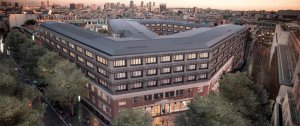Integer Topological Defects in Confined Cell Monolayers Challenge the Standard Model of Active Matter
Cell population dynamics in tissue is fascinating phenomenon as well as essential for morphogenesis. Cells in tissue are often elongated and aligned with each other, exhibiting liquid crystal-like nematic order. Certain cells exhibit stochastic back-and-forth motion in the long axis direction, exhibiting a collective motion similar to that of vibrated granular rods. Stem cells show no contact inhibition and move almost indefinitely, making them an ideal model system for active nematics that exhibit both 2D and 3D morphogenesis. In particular, neural stem (progenitor) cells (NPCs) are known to migrate long distances in dense environments in vivo, passing neighboring cells in opposite directions. It has been shown some time ago that NPCs in vitro have nematic order and ±1/2 topological defects. Cells attracted to +1/2 defects forming 3D mounds while depleted from -1/2 defects. We manufactured microfabricated patterns to induce a one-parameter family of +1 topological defects (spiral, and vortex) in the tissue of NPCs. Conventional theories of active nematics predict that when the tilt angle is larger (smaller) than , the core of +1 defect will be depleted (concentrated), because extensile (extensile) active force enhances (suppress) the bending deformation. Interestingly, however, cells are consistently attracted to the cores of all types of +1 defects. This result challenges the standard model of active nematics. We propose a particle model simulation and derived Boltzmann approach hydrodynamic equations that correctly predict the conditions for accumulation or depletion at +1 defects.








